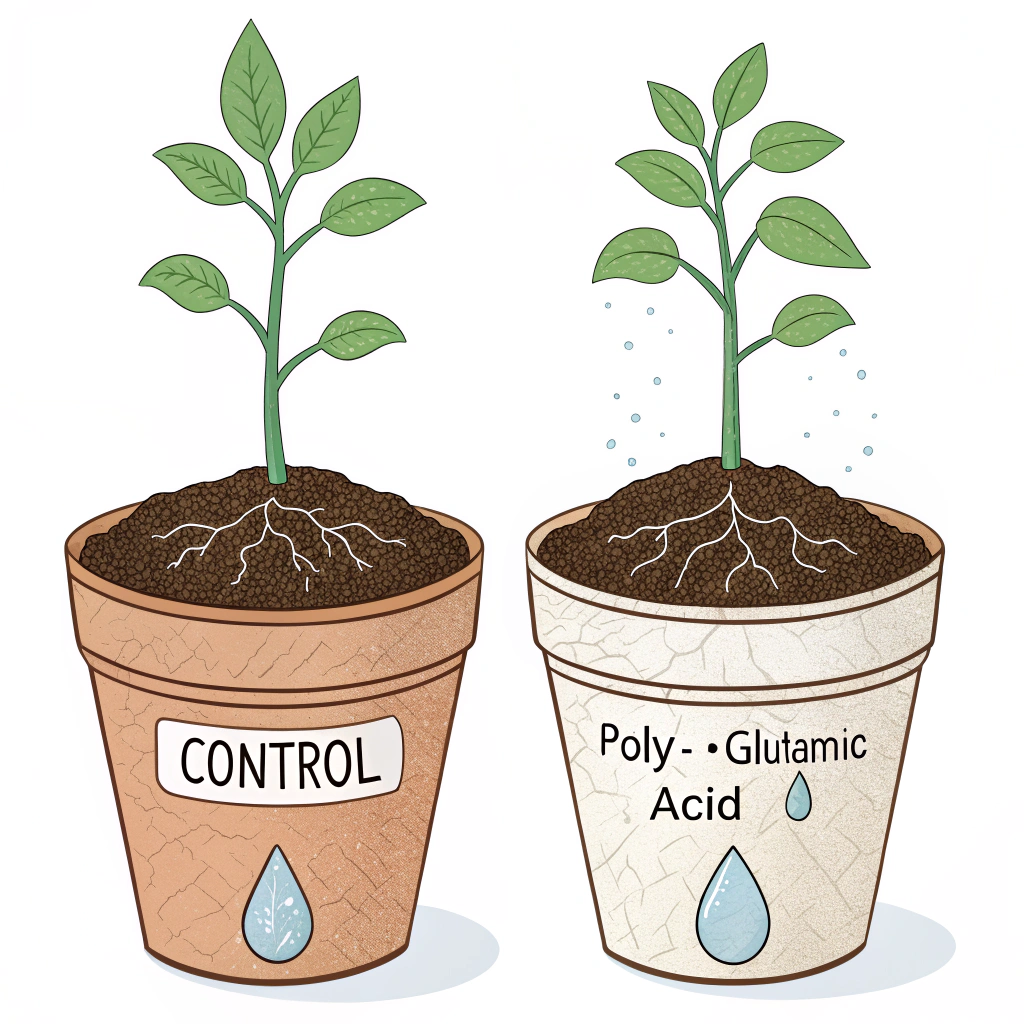Poly-γ-glutamic Acid vs. Humic & Fulvic Acids: A Scientific Comparison
In the pursuit of more efficient and sustainable agriculture, growers are increasingly turning to natural biostimulants to improve plant health and productivity. While substances like humic acid and fulvic acid have long been recognized for their benefits, a new-generation biopolymer, Poly-γ-glutamic Acid (PGA), is emerging as a powerful and unique player. This article provides a scientific comparison of these three compounds, highlighting their distinct mechanisms and benefits for plant and soil systems.
1. Defining the Biostimulants: Structure and Origin
Understanding their chemical makeup is key to grasping how they function.
- Humic Acid: These are large, high-molecular-weight molecules (10,000 – 100,000 Da) formed from the slow decomposition of organic matter. They are dark in color, rich in carboxylic and phenolic groups, and have low water solubility in acidic conditions.
- Fulvic Acid: A lower-molecular-weight fraction (under 5,000 Da) derived from the same organic decay process. Fulvic acid is completely water-soluble across all pH ranges, rich in active functional groups, and has a very high chelating capacity.
- Poly-γ-glutamic Acid (PGA): This is a biological anionic polymer produced by the fermentation of the beneficial bacterium Bacillus subtilis. It is a repeating chain of glutamic acid units, highly soluble in water, and known for its high viscosity and remarkable ability to retain water and nutrients.
2. How They Work: Mechanisms in Soil and Plant
Each compound has a unique mode of action that targets different aspects of plant and soil health.
- Humic Acid: Primarily acts as a long-term soil conditioner. It improves soil structure by increasing porosity and water-holding capacity. By enhancing the soil’s Cation Exchange Capacity (CEC), it acts as a reservoir for essential nutrients, reducing fertilizer loss. It also indirectly stimulates root growth by influencing plant hormones like auxins.
- Fulvic Acid: Due to its small size and high solubility, fulvic acid is an excellent nutrient transporter. It can easily penetrate cell walls and membranes, acting as a natural chelating agent to deliver micronutrients (Fe, Zn, Mn, Cu) directly into plant tissues. It boosts chlorophyll production and enhances a plant’s resistance to abiotic stresses like heat and salinity.
- Poly-γ-glutamic Acid (PGA): PGA’s most unique feature is its “hydrogel” effect. It can absorb and retain a large volume of water and nutrients, acting as a natural reservoir in the root zone. This significantly improves water use efficiency and reduces nutrient leaching by up to 40% in some studies. PGA also binds with positively charged ions (NH₄⁺, K⁺, Ca²⁺), keeping them available for a longer period.
3. Scientific Findings: What the Research Shows
Extensive research supports the distinct benefits of each compound.
- Humic Acid: A study on wheat (Chen et al., 2004) showed that applying humic acid increased the total absorption of nitrogen and phosphorus by 15–20% and improved dry matter by 18%.
- Fulvic Acid: Research on tomatoes (Xu et al., 2013) found that foliar application of fulvic acid increased chlorophyll content by 22% and boosted fruit yield by 18%. In rice, it was shown to enhance salt tolerance by improving the activity of stress-defense enzymes and reducing sodium accumulation (Zhang et al., 2018).

- Poly-γ-glutamic Acid (PGA): A study on corn (Shih et al., 2011) revealed that adding PGA increased nitrogen use efficiency by 35% and boosted yield by 12%. In a study on cucumbers, irrigation with PGA reduced water consumption by 25% while maintaining the same yield (Liu et al., 2020), thanks to improved soil moisture retention and osmotic balance in the plant.
4. The Synergy of Biostimulants: A Complete Solution
Rather than viewing these compounds as competing alternatives, the most advanced approach in agriculture is to use them synergistically.
- Humic acids build the long-term fertility and structure of the soil.
- Fulvic acids act as the fast-acting delivery system for nutrients and stress defense.
- Poly-γ-glutamic Acid ensures that water and applied fertilizers are used with maximum efficiency, preventing waste and ensuring sustained availability.
A comprehensive product combining these three biostimulants offers a holistic solution for growers, addressing soil health, nutrient uptake, and stress resilience simultaneously.
External Resources & Further Reading
- Humic & Fulvic Acid: Mechanisms of Plant Growth Stimulation by Humic Substances
Conclusion
While each of these biostimulants offers unique and valuable benefits, Poly-γ-glutamic Acid stands out for its exceptional ability to manage water and fertilizer efficiency, making it a critical tool for modern, resource-conscious agriculture. By understanding their distinct roles, growers can choose the right combination of products to build a healthier, more productive, and resilient crop from the ground up.






